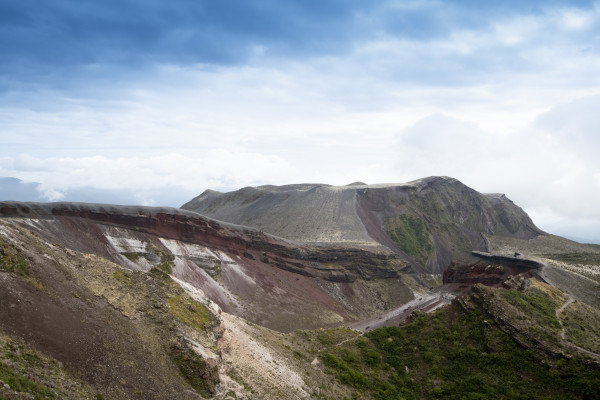
The National Wilding Conifer Control Programme announced $92,100 in 2019-2020 to help the control of wilding pines on Mt Tarawera.
Mt Tarawera is a dormant volcano, just southeast of Rotorua. The mountain is under the guardianship – kaitiakitanga – of Ngāti Rangitihi.
The mountain is 1111 metres high, and was the site of New Zealand’s largest eruption in the last 500 years. The eruption (in 1886) was highly destructive, killing more than 100 people, burying the world-famous pink and white terraces and blowing a 17 kilometre rift along the top of the mountain. Ash and finely fragmented mud was spread over much of the region – collapsing buildings and smothering vegetation.
Because the eruption destroyed much of the vegetation on Mt Tarawera and the surrounding area, today its slopes are covered by regenerating geothermal vegetation and indigenous shrub land. This includes manuka, monoao, mingimingi and protrate kanuka. This unique ecosystem is considered rare within New Zealand.
Living within this vegetation on the mountain is the forest gecko or moko-piri-rakau. This tree-living, largely nocturnal lizard is in decline on the New Zealand mainland.
The banded dotterel, or tūturiwhatu/pohowera, is also found on the mountain. It is normally a wading bird, but can be found nesting on Mt Tarawera’s slopes – nine kilometres from Lake Rerewhakaaitu. Numbers of this small bird (just 60 grams, less than a medium-sized apple) are declining to due introduced pests and loss of habitat.
The regenerating, fragile ecosystem of the Maunga is under threat. Wilding pines endanger the vegetation and jeopardise the animals living within it.
The Ruawahia Tarawera Wilding Conifer project has been tackling wilding infestations on the Maunga since 2009. The people of Ngati Rangitihi are the custodians of the mountain, and it is administered by the Ruawahia 2B Trust – a Ngati Rangitihi land trust. The mountain is a very highly significant and sacred urupa for Ngati Rangitihi.
A 4-person wilding conifer control crew works on the mountain for at least 5 months of the year – this crew is an iwi- based crew of Ngati Rangitihi men. The project is heavily supported by the Department of Conservation and Bay of Plenty Regional Council, with strong turnout from several volunteer groups for volunteer days.
To date efforts have focused on the eradication of Pinus Contorta or wilding pines and long term will encompass all invasive non-native flora and fauna that pose a threat to Mount Tarawera’s natural state. This has largely been funded by the governing trust (Ruawahia 2B) from revenues earned from tourism concessions, with funding from the Department of Conservation and the Bay of Plenty Regional Council.
The National Wilding Conifer Control Programme announced $92,100 in 2019-2020 to help control the wilding pines on Mt Tarawera. This will allow the Trust to expand the work programme, and increase the level of control on the mountain, with follow-up treatment for controlled areas and a longer control season (so the crew can work the mountain for longer).
The funding will also enable the project to increase aerial control of scattered and difficult to access trees, which are significant seed sources. Control work will be led by Ngāti Rangatihi, the local iwi.
See more photos of wilding pines at Mt Tarawera in our image gallery.